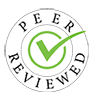Study of Vaccination is types and working over Immune system of Human Body
Keywords:
Vaccine, Immunization, Virus, BacteriaAbstract
In contemporary medicine, vaccines have been hailed as one of the greatest achievements. Vaccinology and immunology have a history dating back more than two centuries, yet their development paths have diverged so drastically that many of the world's most effective vaccines were developed experimentally, with little or no consideration for immunological factors. It is now possible to develop vaccines with a more logical approach because to new insights into the processes of vaccination-induced immunity. Here, we'll look at some of the most recent developments in the field of vaccine immunology.
References
Zhu J, Yamane H, Paul WE. Differentiation of effector CD4 T cell populations (*) Annu. Rev. Immunol. 2010;28:445–489.
Crotty S. Follicular helper CD4 T cells (TFH) Annu. Rev. Immunol. 2011;29:621–663.
Sallusto F, Lanzavecchia A, Araki K, Ahmed R. From vaccines to memory and back. Immunity. 2010;33:451–463.
Iwasaki A, Medzhitov R. Regulation of adaptive immunity by the innate immune system. Science. 2010;327:291–295.
Kawai T, Akira S. The role of pattern-recognition receptors in innate immunity: update on Toll-like receptors. Nat. Immunol. 2010;11:373–384.
Geijtenbeek TB, Gringhuis SI. Signalling through C-type lectin receptors: shaping immune responses. Nat. Rev. Immunol. 2009;9:465–479
Ting JP, Duncan JA, Lei Y. How the noninflammasome NLRs function in the innate immune system. Science. 2010;327:286–290. [PMC free article] [PubMed] [Google Scholar]
Wilkins C, Gale M., Jr. Recognition of viruses by cytoplasmic sensors. Curr. Opin. Immunol. 2010;22:41–47.
Pulendran B, Ahmed R. Translating innate immunity into immunological memory: implications for vaccine development. Cell. 2006;124:849–863.
Steinman RM. Dendritic cells in vivo: a key target for a new vaccine science. Immunity. 2008;29:319–324.
Downloads
Published
How to Cite
Issue
Section
License
Copyright (c) 2022 International Journal for Research Publication and Seminar

This work is licensed under a Creative Commons Attribution 4.0 International License.
Re-users must give appropriate credit, provide a link to the license, and indicate if changes were made. You may do so in any reasonable manner, but not in any way that suggests the licensor endorses you or your use. This license allows for redistribution, commercial and non-commercial, as long as the original work is properly credited.


